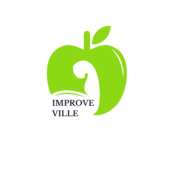In a world where convenience often takes precedence, the healthy living market has emerged as a beacon of hope. It’s a rapidly growing industry that’s reshaping the way people approach their daily routines, diets, and overall wellness.
So, whether you’re a health-conscious consumer or an entrepreneur looking to tap into this lucrative market, there’s plenty to learn and discover. Let’s embark on this journey of understanding the healthy living market together.
Overview of the Healthy Living Market
The healthy living market encapsulates an abundance of solutions aimed at promoting wellness. It’s a rapidly growing sector with products ranging from organic food items to wellness-geared apps.
 Key Players in the Market
Key Players in the Market
The healthy living market enjoys the presence of vibrant players, each bringing unique offerings to the table. Nestlé stands as a dominant player, known for its various health-oriented products. Apple, with its wellness apps and health-monitored products, too, makes a significant contribution.
New entrant Noom, an app-based weight-loss program, demonstrates a fresh approach to wellness. Deeper insights reveal numerous other contributors enhancing the variety and quality of the market’s offerings.
Market Growth Trends
Numerous trends underpin the growth trajectory of the healthy living market. Organic food consumption represents one such trend, with consumers globally showing a growing preference for naturally grown and chemical-free products. Additionally, the rise in wellness apps indicates a digital transformation in the way individuals approach personal health and fitness.
A consistent increase in individuals adopting plant-based diets also contributes to this market’s expansion. Altogether, these trends hint at a future wherein healthy living is not just a choice, but the norm.
Healthy Living Market
Indeed, the Healthy Living Market comprises variegated goods and services tailored towards promoting health and wellness in society. This sector presents a plethora of products, ranging from health foods to fitness services.
 Overview of Health Foods
Overview of Health Foods
Health foods, a critical part of this market, focus on organic and plant-based diets. Buyers show a growing preference for these foods as they’re rich in essential nutrients and free from harmful additives.
For instance, organic fruits and vegetables, cereals, whole grains, fermented foods, and plant-based proteins are sought-after items in the healthy living market. Nestlé’s organic product range exemplifies this trend, as they offer foods free from harmful pesticides, herbicides, and genetically modified organisms (GMOs).
Fitness Products and Services
Likewise, fitness products and services form a considerable chunk of the healthy living market. These aim to accommodate consumers’ increasing health cognizance and urge to prevent illness. Business entities and entrepreneurs predominantly concentrate on wellness apps, wearable fitness devices, and personalized exercise programs in this sector.
To illustrate, Apple’s Health app and the weight loss program by Noom embody how technology enhances healthful living. These tech-based fitness solutions deliver personalized, easy-to-track fitness regimes, emphasizing the importance of regular physical activity in maintaining a healthy lifestyle.
Challenges in the Healthy Living Market
In navigating the complex terrain of the healthy living market, two key obstacles emerge: the challenge of combating misinformation and the typically high costs associated with this lifestyle.
 Dealing with Misinformation
Dealing with Misinformation
In the burgeoning world of healthy living, the abundant availability of information isn’t always an advantage. Misinformation presents a significant challenge as it often masquerades as factual wellness advice.
For instance, pseudo-science presents theories like ‘detox diets’ or ‘miracle foods’, often causing confusion among consumers looking for reliable health guidance. With companies like Nestlé and Apple in focus, they shoulder the responsibility of imparting accurate, backed-by-science information to negate the impact of such misinformation.
The Cost of Healthy Living
Another significant deterrent to a healthy lifestyle is the associated cost. Products and services in the healthy living market, from organic fruits to wellness apps, generally command higher prices than their regular counterparts. The price tags on plant-based proteins, additive-free foods, or wearable fitness devices make them less accessible to a large portion of the population.
Consequently, the cost presents a critical challenge that market leaders and newcomers like Noom must address if they aim to make healthy living an achievable goal for everyone.

